Early Detection is the Key to Effective Security.
Security doesn’t start at your building, but at the boundary of your site. The sooner an intruder is detected, the greater the chance that damage or intrusion will be prevented. Modern outdoor detection is no longer just about sensors and fences — it’s about intelligent, integrated systems that use data to understand context, prioritize, and take action.
At Mactwin, we combine physical technology, data science, and AI to make outdoor detection independent of human intervention, more accurate, and more reliable. In this overview, we discuss the most commonly used and most innovative technologies — from classic methods to the latest solutions with LiDAR and artificial intelligence.
1. Underground detection
Invisible and extremely effective: underground detection systems recognize pressure differences or vibrations that occur when someone moves across the site. They work with pressure mats, liquid-filled hoses, or vibration sensors.
Benefits:
- Completely invisible and resistant to sabotage
- Works on virtually any surface
- Insensitive to weather influences
Disadvantages:
- Higher installation costs due to excavation work
- Sensitivity must be well-tuned to environmental vibrations (truck traffic, railway lines)
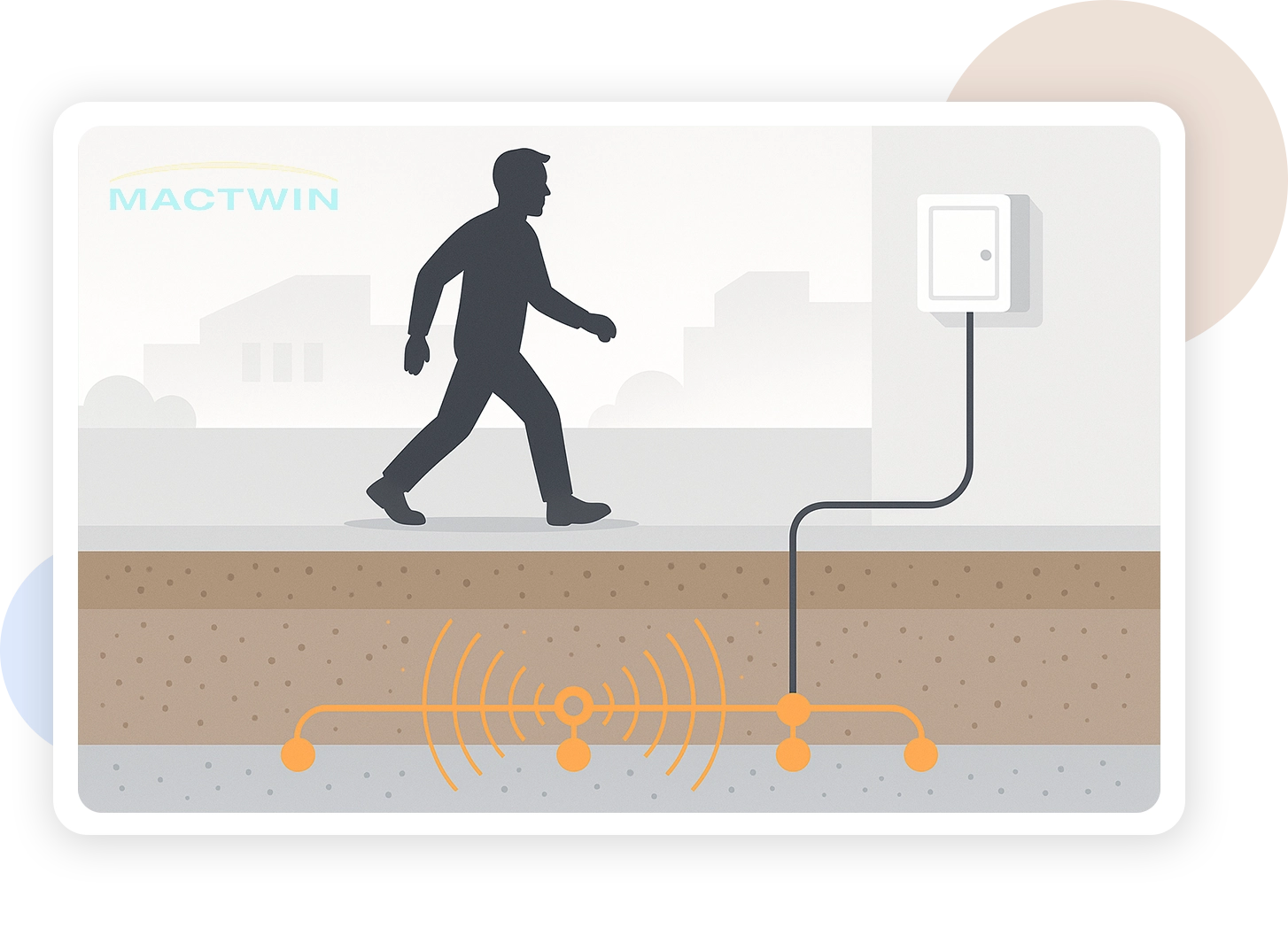

2. Electric fence systems
A classic, visible, but effective form of perimeter security. Electric fence not only delivers a deterrent shock but also detects attempts to climb it. Detection occurs through voltage changes or pulse interruptions.
Benefits:
- Physical barrier and detection in one
- Easy installation on existing fences
Disadvantages:
- Visible and can be manipulated
- Regular maintenance required
Integration with video analysis enables direct verification: as soon as the system triggers an alarm, the camera automatically focuses on the relevant zone for visual confirmation.
3. Acoustic cable system
These systems measure small distortions in fencing or walls. An acoustic sensor cable registers every tension or vibration and translates this into an alarm signal.
Benefits:
- Precise detection along long fences
Disadvantages:
- Sensitive to wind, rain, and vandalism
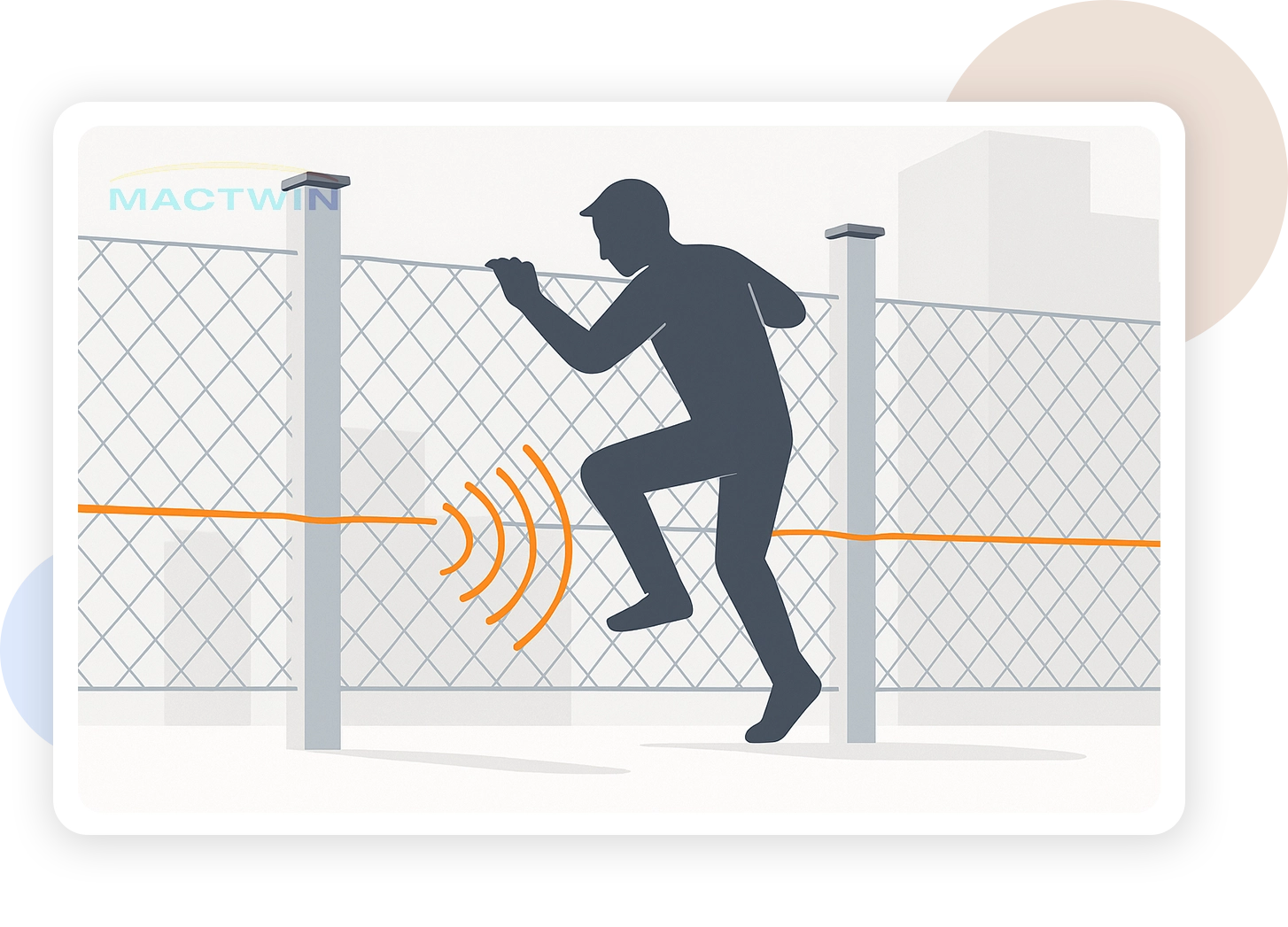
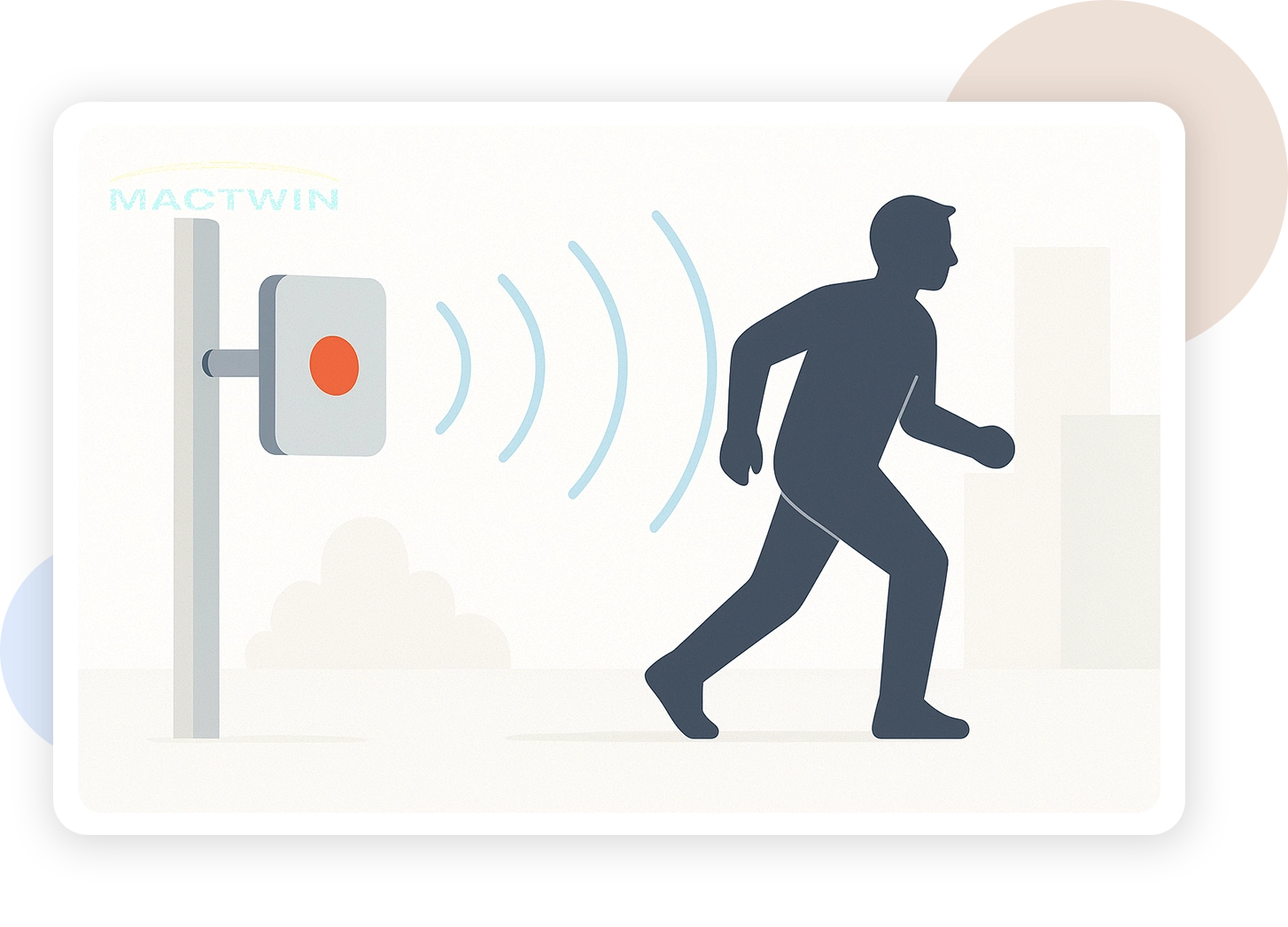
4. Digital radar systems
Radar detection creates a virtual wall of microwaves. Movement within this field triggers an alarm. Radar is ideal for large open areas and terrain segmentation (multi-zone detection).
Benefits:
- Invisible, weather-resistant, long range
- Detection even in complete darkness
Disadvantages:
- Can experience interference from moving objects or rain
5. Active infrared systems
Transmitter and receiver create an invisible infrared beam. If this is interrupted, an alarm message follows.
Benefits:
- Long range (up to 200 m)
- Can be adjusted accurately
Disadvantages:
- Sensitive to fog, snow, and vegetation
Development: Infrared is increasingly being combined with thermal cameras, making detection more reliable in varying weather conditions.
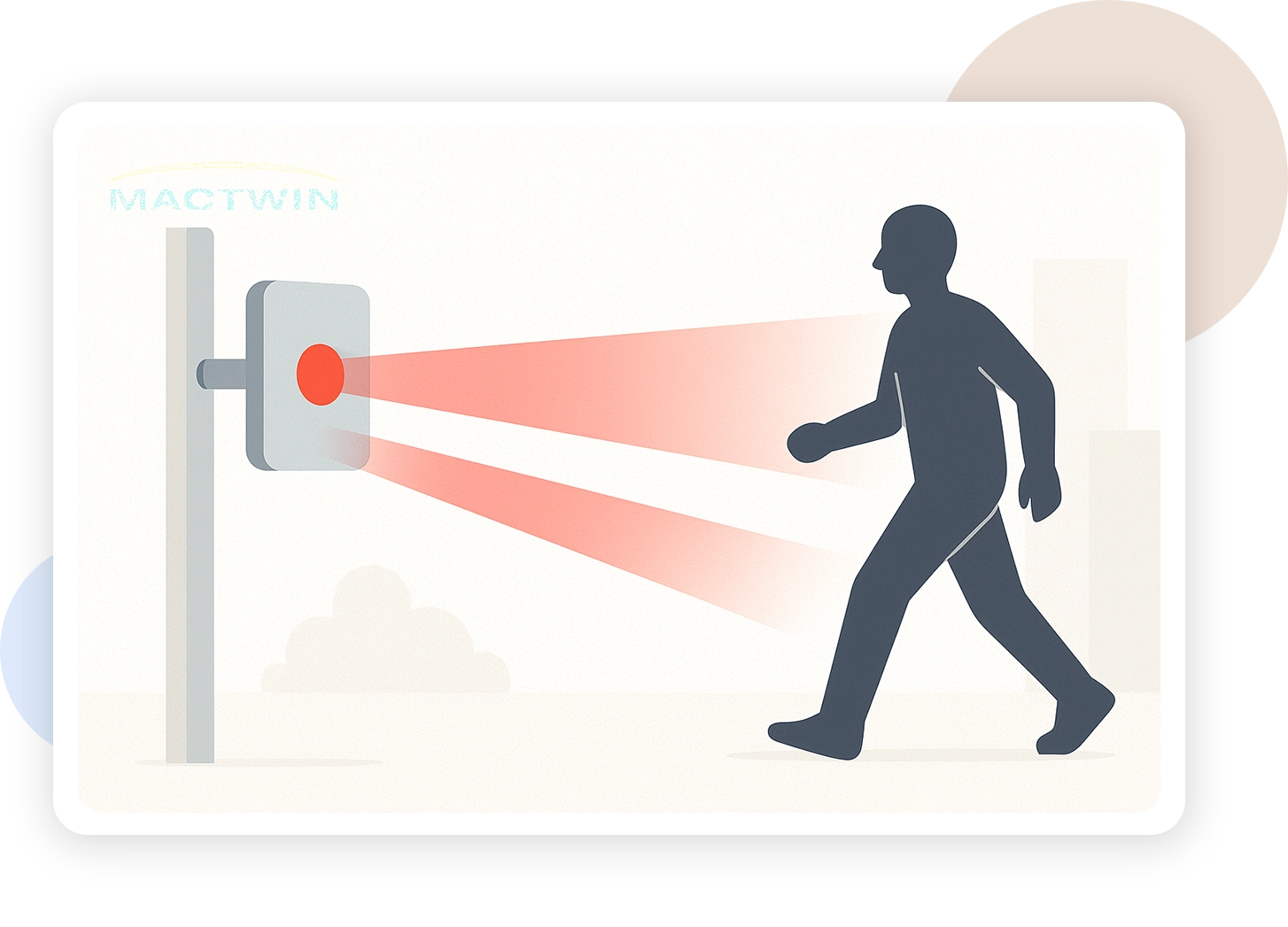

6. Passive infrared (PIR) detection
PIR detectors respond to heat differences between objects and the environment.
Benefits:
- Affordable detection for limited zones
- Can be combined with radar or video analysis
Disadvantages:
- Less effective with direct approach
- Can be influenced by temperature differences
Often applied as a secondary detection layer, not as primary perimeter security.
7. 2d Laser Scanner (IR/LiDAR)
A laser detector scans a plane horizontally or vertically and registers interruptions, this is accomplished using LiDAR (Light Detection & Ranging) or Infrared (IR) sensors.
Benefits:
- High precision in narrow zones
- Detection without physical contact points
Disadvantages:
- Detects only in one plane (2D)
Often applied as a virtual wall or ceiling for specific zones (e.g., access routes, gates).

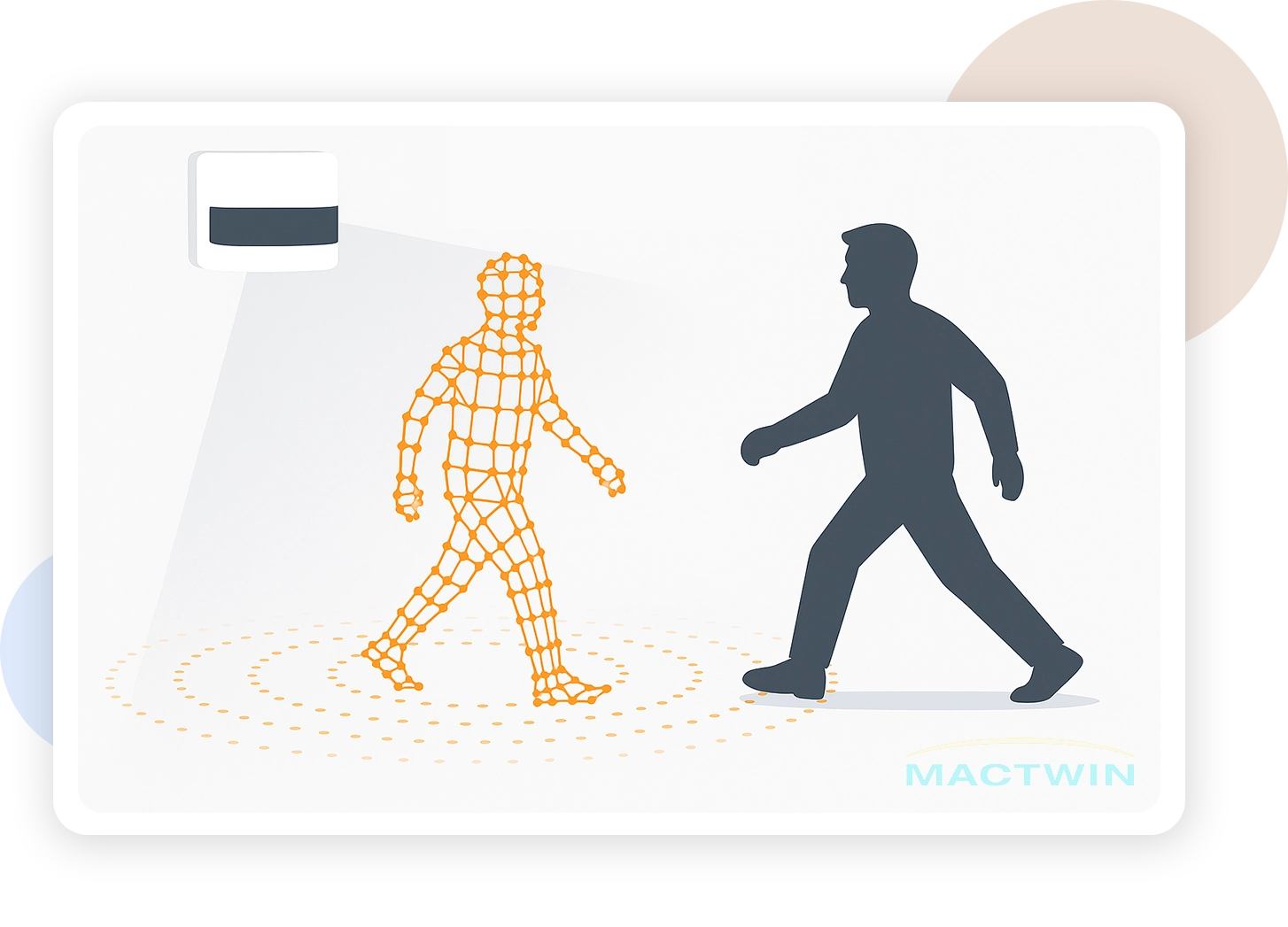
8. 3d LiDAR Detection
A LiDAR sensor scans the terrain in 3D and creates an accurate point cloud model. Movements, shapes, and objects are instantly recognized.
Benefits:
- Completely independent of light: works just as well in darkness, fog, or rain
- Very accurate: recognizes human shape, direction, and speed
- No privacy issues: no facial recognition or camera images required
Disadvantages:
- Higher purchase costs
- Requires calibration and VMS integration
Application: ideal for high-security zones, critical infrastructure, airports, and industrial environments where reliability is crucial.
Mactwin combines LiDAR with PTZ cameras, allowing detected individuals to be followed up with PTZ cameras for real-time tracking.
9. Camera systems with AI video analysis
Cameras are no longer the passive observers of the past. Modern VSS (Video Surveillance Systems) with AI analysis automatically recognize people, vehicles, and behavior patterns.
Benefits:
- Recognizes deviant behavior (lurking, running, climbing)
- Combines video, radar, and sound in one decision algorithm
- Eliminates up to 95% of false alarms
- Analysis can take place locally (“edge”) or in the cloud
- Intelligent cameras process data directly, without a central server, resulting in faster detection and lower network load.
Disadvantages:
- 2D not always sufficient data
- Dependent on image quality
Use in Practice:
- Detection of intruders from a distance
- Tracking of objects via multi-camera tracking
- Automatic control of PTZ cameras and lighting
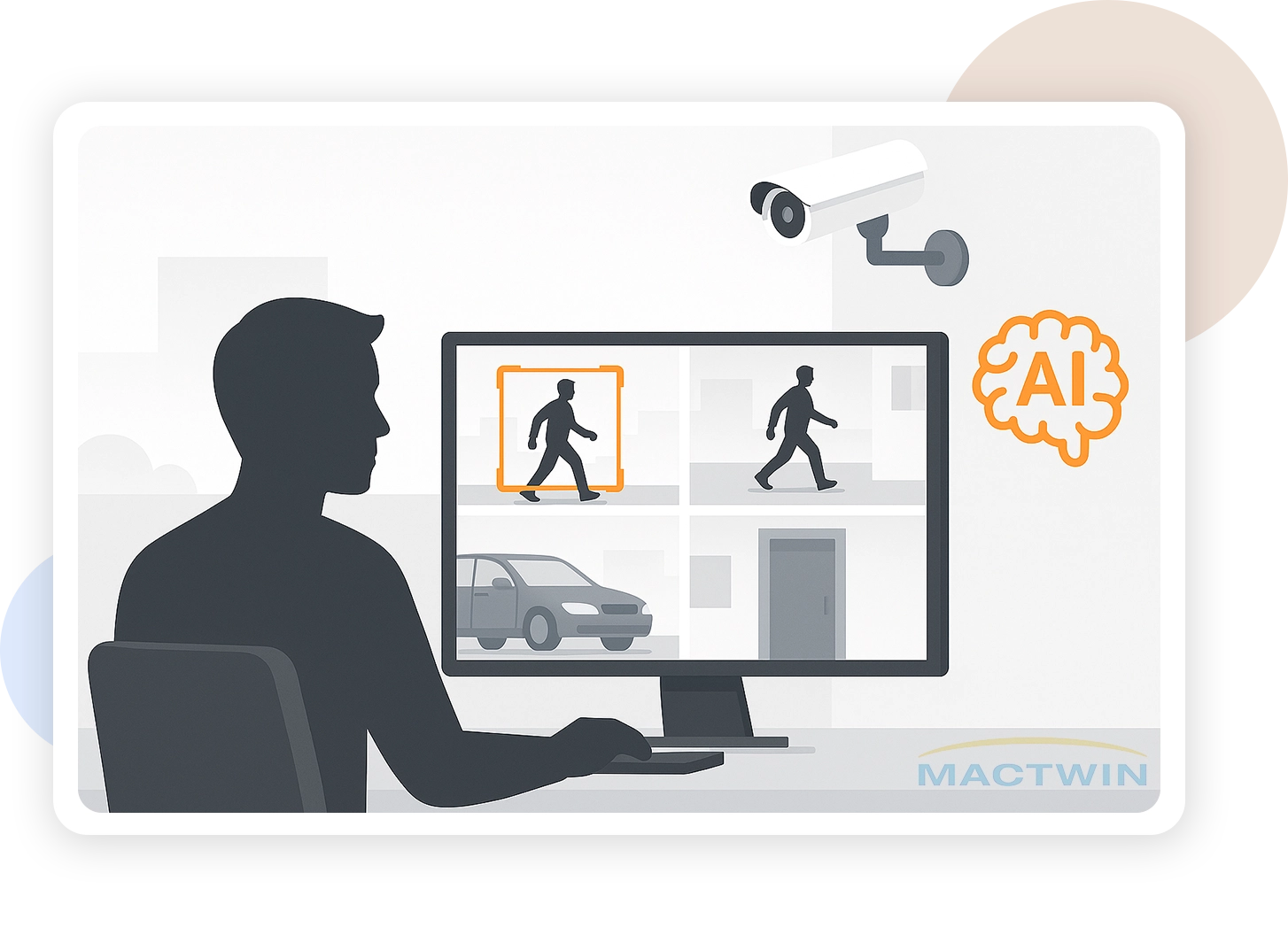
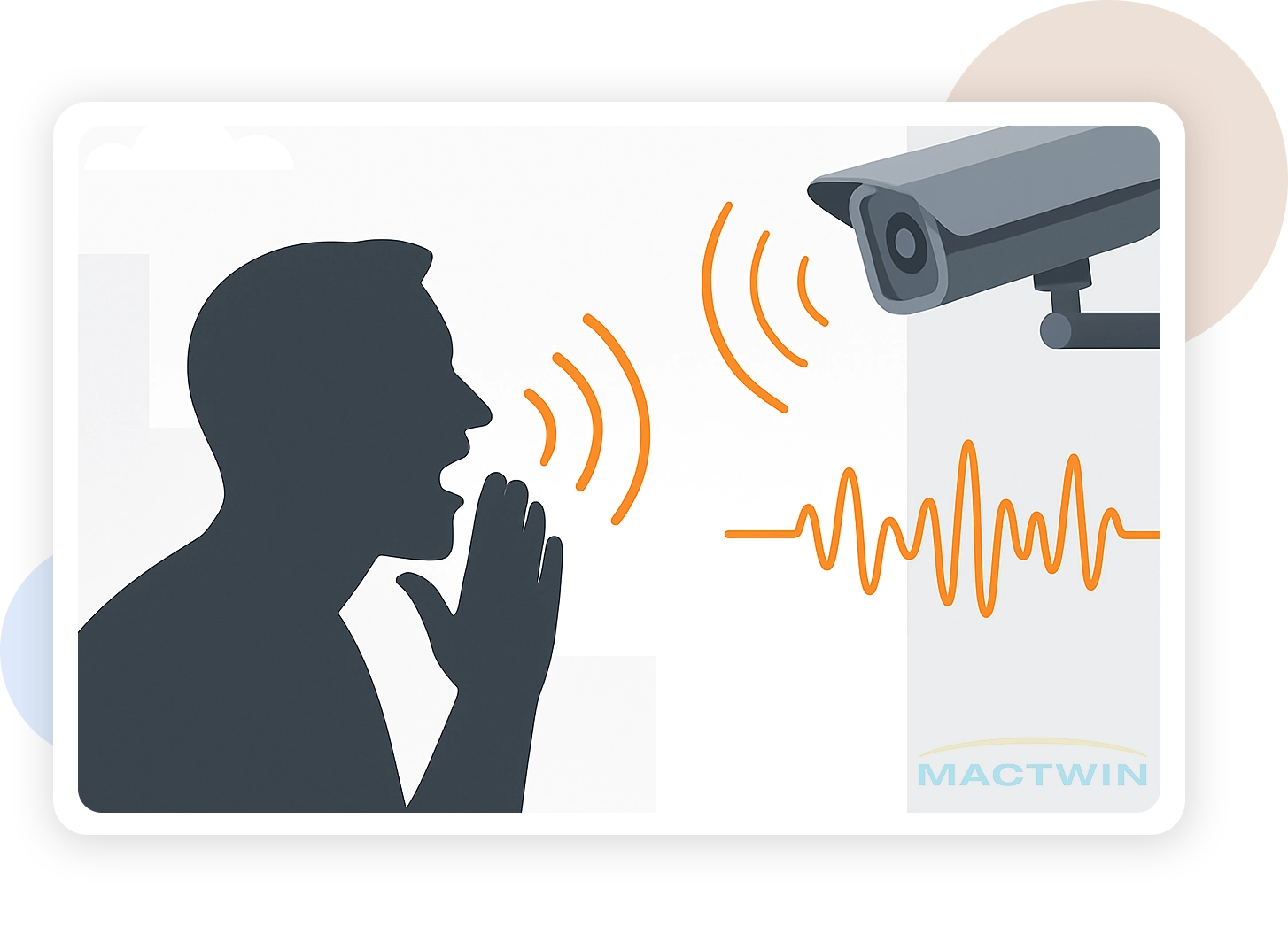
10. Audio detection
Audio sensors analyze sound levels and specific patterns (glass breakage, explosion, shots).
Benefits:
- Detects incidents that are not visually visible
- Perfect complement to cameras and radar
Disadvantages:
- Susceptible to wind and acoustic interference
- Effectiveness depends on positioning and background noise
Using AI audio models (sound classification networks), modern systems can recognize sounds such as shouting, metal noise, or tools, which is a valuable addition for real-time security.
